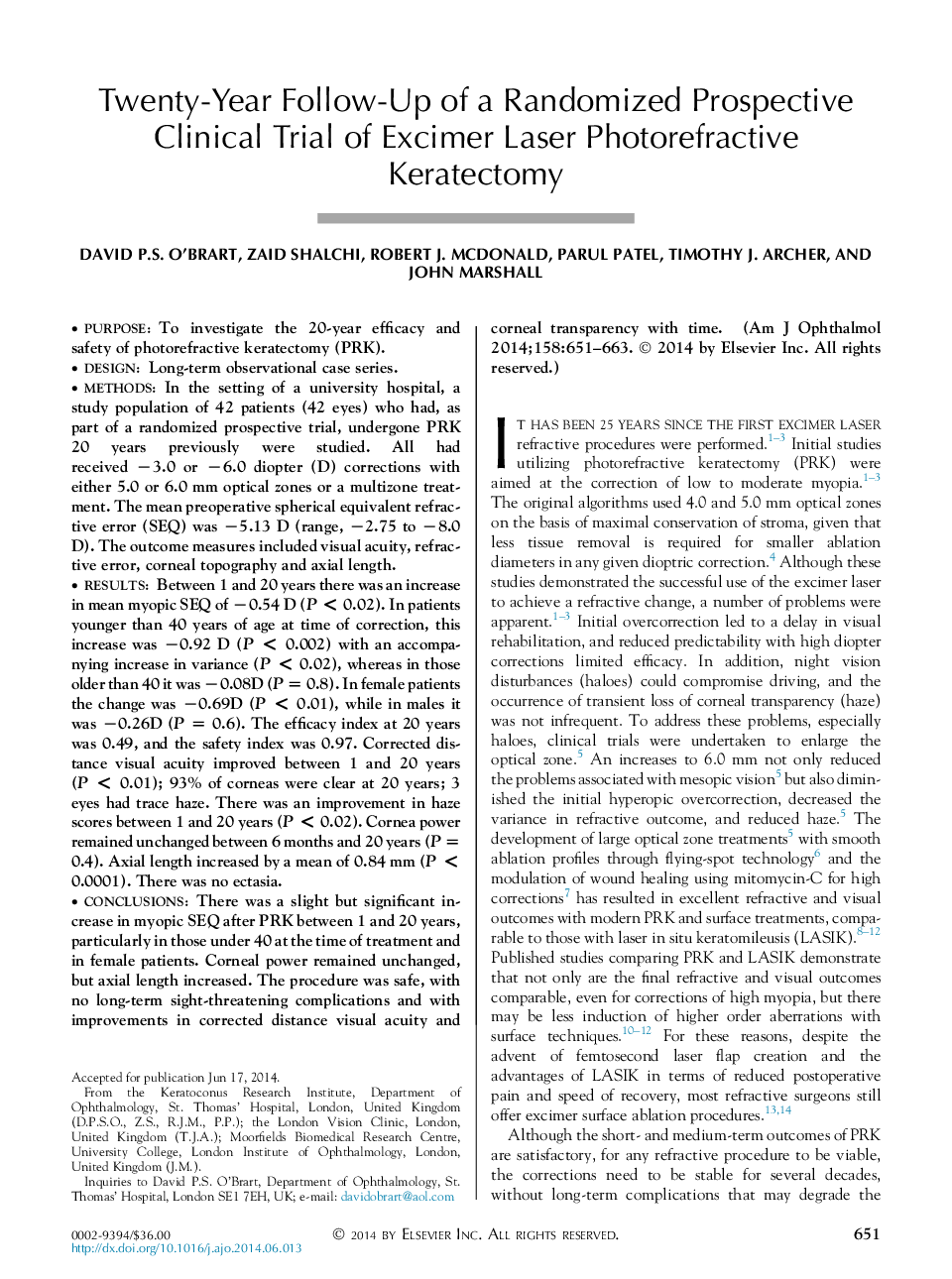| کد مقاله | کد نشریه | سال انتشار | مقاله انگلیسی | نسخه تمام متن |
|---|---|---|---|---|
| 6195746 | 1602131 | 2014 | 14 صفحه PDF | دانلود رایگان |
PurposeTo investigate the 20-year efficacy and safety of photorefractive keratectomy (PRK).DesignLong-term observational case series.MethodsIn the setting of a university hospital, a study population of 42 patients (42 eyes) who had, as part of a randomized prospective trial, undergone PRK 20 years previously were studied. All had received â3.0 or â6.0 diopter (D) corrections with either 5.0 or 6.0 mm optical zones or a multizone treatment. The mean preoperative spherical equivalent refractive error (SEQ) was â5.13 D (range, â2.75 to â8.0 D). The outcome measures included visual acuity, refractive error, corneal topography and axial length.ResultsBetween 1 and 20 years there was an increase in mean myopic SEQ of â0.54 D (P < 0.02). In patients younger than 40 years of age at time of correction, this increase was â0.92 D (P < 0.002) with an accompanying increase in variance (P < 0.02), whereas in those older than 40 it was â0.08D (P = 0.8). In female patients the change was â0.69D (P < 0.01), while in males it was â0.26D (P = 0.6). The efficacy index at 20 years was 0.49, and the safety index was 0.97. Corrected distance visual acuity improved between 1 and 20 years (P < 0.01); 93% of corneas were clear at 20 years; 3 eyes had trace haze. There was an improvement in haze scores between 1 and 20 years (P < 0.02). Cornea power remained unchanged between 6 months and 20 years (P = 0.4). Axial length increased by a mean of 0.84 mm (P < 0.0001). There was no ectasia.ConclusionsThere was a slight but significant increase in myopic SEQ after PRK between 1 and 20 years, particularly in those under 40 at the time of treatment and in female patients. Corneal power remained unchanged, but axial length increased. The procedure was safe, with no long-term sight-threatening complications and with improvements in corrected distance visual acuity and corneal transparency with time.
Journal: American Journal of Ophthalmology - Volume 158, Issue 4, October 2014, Pages 651-663.e1
